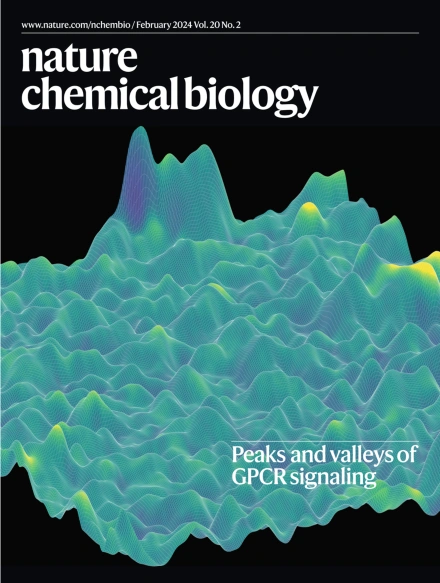利用小核RNA增强哺乳动物转录本的RNA碱基编辑。
IF 13.7
1区 生物学
Q1 BIOCHEMISTRY & MOLECULAR BIOLOGY
引用次数: 0
摘要
内源性富含尿苷的小核rna (usnrna)形成rna -蛋白复合物,将真核前mRNA加工成mRNA。先前的研究已经证明了可编程的U snRNA引导靶向外显子的包含和排除。在这里,我们研究了snrna是否也可以在人类细胞中比最先进的RNA靶向技术增强RNA碱基编辑。与腺苷脱氨酶作用于RNA (ADAR)募集环状RNA相比,我们发现,引导的A bbbbi snrna持续增加了对高外显子数基因的腺苷到肌苷的编辑,大大减少了脱靶基因的干扰,并且更持久地定位于表达ADAR的细胞核。bbbbi snrna还能更有效地编辑长链非编码rna和mrna前3'剪接位点,从而促进剪接改变。最后,在囊性纤维化人支气管上皮细胞模型中,snRNA-H/ACA盒snrna融合(U>Ψ snrna)增加了靶向RNA假尿嘧啶化,而没有DKC1过表达,促进了CFTR从无义介导的mRNA降解中得到改善。我们的研究结果推进了内源性蛋白质介导的RNA碱基编辑工具箱和RNA靶向技术来治疗遗传疾病。本文章由计算机程序翻译,如有差异,请以英文原文为准。
Enhancing RNA base editing on mammalian transcripts with small nuclear RNAs.
Endogenous uridine-rich small nuclear RNAs (U snRNAs) form RNA-protein complexes to process eukaryotic pre-mRNA into mRNA. Previous studies have demonstrated programmable U snRNA guide-targeted exon inclusion and exclusion. Here we investigated whether snRNAs can also enhance RNA base editing over state-of-the-art RNA-targeting technologies in human cells. Compared with adenosine deaminase acting on RNA (ADAR)-recruiting circular RNAs, we find that guided A>I snRNAs consistently increase adenosine-to-inosine editing for higher exon count genes, perturb substantially fewer off-target genes and localize more persistently to the nucleus where ADAR is expressed. A>I snRNAs also more efficiently edit long noncoding RNAs and pre-mRNA 3' splice sites to promote splicing changes. Lastly, snRNA-H/ACA box snoRNA fusions (U>Ψ snRNAs) increase targeted RNA pseudouridylation without DKC1 overexpression, facilitating improved CFTR rescue from nonsense-mediated mRNA decay in a cystic fibrosis human bronchial epithelial cell model. Our results advance the endogenous protein-mediated RNA base editing toolbox and RNA-targeting technologies to treat genetic diseases.
求助全文
通过发布文献求助,成功后即可免费获取论文全文。
去求助
来源期刊

Nature chemical biology
生物-生化与分子生物学
CiteScore
23.90
自引率
1.40%
发文量
238
审稿时长
12 months
期刊介绍:
Nature Chemical Biology stands as an esteemed international monthly journal, offering a prominent platform for the chemical biology community to showcase top-tier original research and commentary. Operating at the crossroads of chemistry, biology, and related disciplines, chemical biology utilizes scientific ideas and approaches to comprehend and manipulate biological systems with molecular precision.
The journal embraces contributions from the growing community of chemical biologists, encompassing insights from chemists applying principles and tools to biological inquiries and biologists striving to comprehend and control molecular-level biological processes. We prioritize studies unveiling significant conceptual or practical advancements in areas where chemistry and biology intersect, emphasizing basic research, especially those reporting novel chemical or biological tools and offering profound molecular-level insights into underlying biological mechanisms.
Nature Chemical Biology also welcomes manuscripts describing applied molecular studies at the chemistry-biology interface due to the broad utility of chemical biology approaches in manipulating or engineering biological systems. Irrespective of scientific focus, we actively seek submissions that creatively blend chemistry and biology, particularly those providing substantial conceptual or methodological breakthroughs with the potential to open innovative research avenues. The journal maintains a robust and impartial review process, emphasizing thorough chemical and biological characterization.
 求助内容:
求助内容: 应助结果提醒方式:
应助结果提醒方式:


